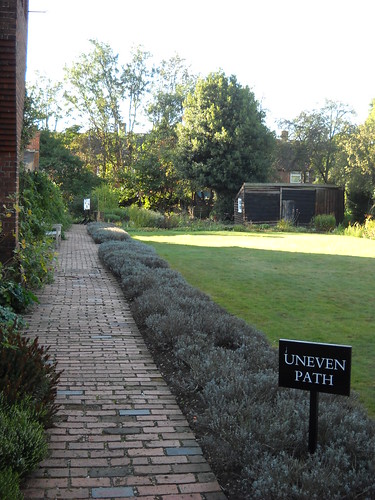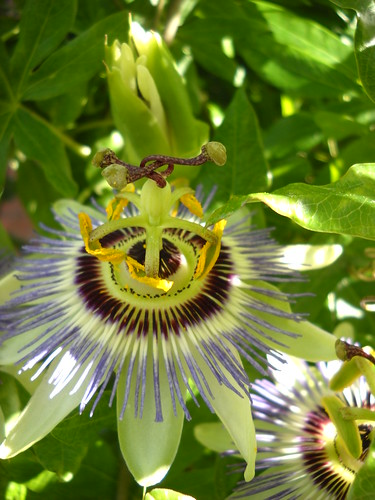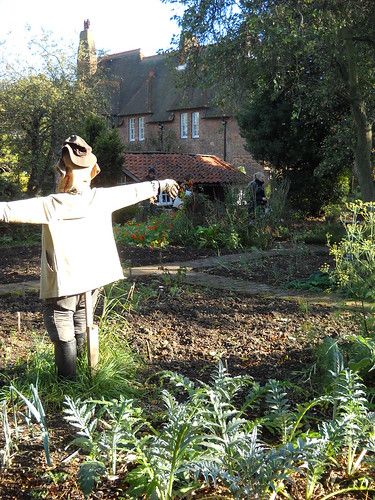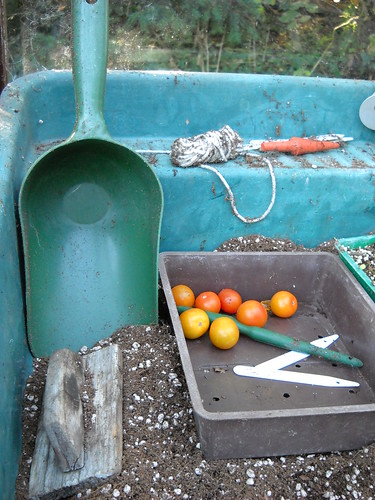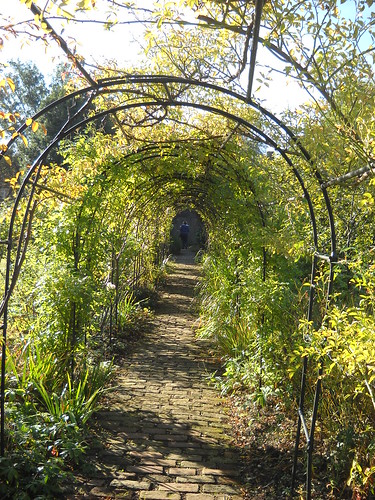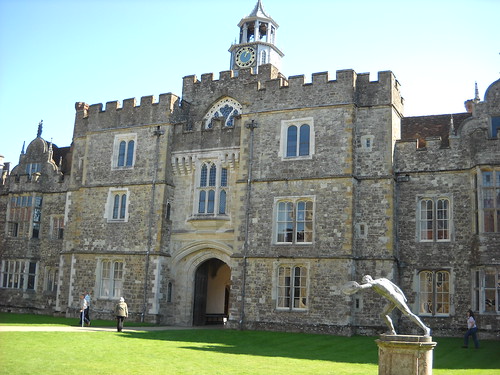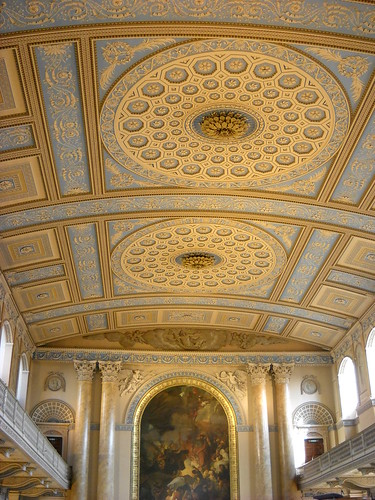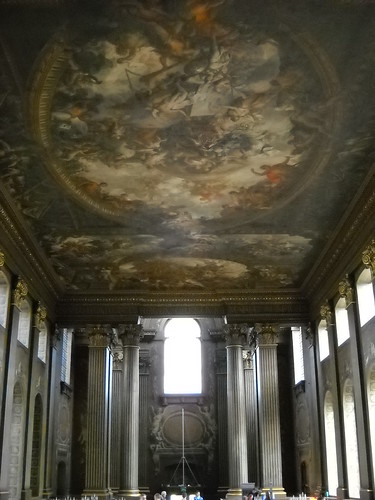24 December 2011
18 December 2011
University Website Error's
This is the result of higher education. I shake my head. Clearly this person didn't occupy their English class. At least they own their mistakes! (I wonder if Lynne Truss offers group therapy sessions? If so, these people should stop dithering and sign up! Sticklers Unite!!! Hand me that red pen, would you?)
 |
| Click the picture. It'll be easier to read if you do. Go on, then. |
Bundle Up! It's cold out there! (with an excerpt from "Little Tree" by E.E. Cummings)
"...then when you're quite dressed
you'll stand in the window for everyone to see
and how they'll stare!
oh but you'll be very proud
and my little sister and i will take hands
and looking up at our beautiful tree
we'll dance and sing..."
you'll stand in the window for everyone to see
and how they'll stare!
oh but you'll be very proud
and my little sister and i will take hands
and looking up at our beautiful tree
we'll dance and sing..."
Labels:
Tree hugging,
tree sweater,
yarn bomb
03 December 2011
Go Hug A Tree
I've never been one to go in with the type of person who would chain themselves to a tree to prevent another person doing harm to that tree but I sympathize with their point of view. Anti-treeists (aka suburban developers, corporate monopolies, uneducated homeowners, and diabolical amateurs with chain saws) obviously have some deep seated issues with trees. I'm not a psychologist so I can't speak to their apparent tree-hating tendencies, but I think it has more to do with lack of education about trees than an outward hate of their leafy benevolence. Even those who are responsible for their planting on streets and in plazas often don't know what the habit of the tree they're planting is, and then are stumped when the tree does what trees are supposed to do.
Trees help us in ways most people are blissfully unaware of, which is really quite a shocking revelation given all the current hype about climate change, carbon footprints, etc. Most people probably don't know that 1000 trees remove 100 tons of CO2 per year, or that a single mature tree can release enough oxygen back into the atmosphere to support two human beings. That's to say nothing of their biodiversity or aesthetic value. Where would we be without the humble tree? Yet the tree must be one of the most abused beings of the plant world.
Just this week my hometown was ravaged by unusually high (as in hurricane force) Santa Ana winds. My brother said he saw Toto, Dorothy's house, and the Wicked Witch hurl past the window, and I don't doubt it. Seeing the destruction caused by downed trees in photos on the news was surreal, but I can't help but wonder if many of those trees would still be standing had they been properly cared for? Many of the victims were street trees and I'd wager ill-advised choice of species and method of planting had a lot to do with it. Check it out:
All three images are of the same unfortunate van under the same unfortunate tree. Notice the roots (what roots?). My point exactly! The AP caption said the tree is a Eucalyptus, and while many species of Eucs have a narrow profile, the roots of a healthy specimen should extend will beyond the drip line. While Eucalyptus roots can venture deep in sandy soil, which much of LA has, they are commonly planted as So Cal street trees because of their "drought tolerance" and not given much water, so their roots stay shallow instead of burrowing deep. No wonder they toppled. Here, the roots have been pigeonholed into the space between the sidewalk and street, and actually look as if one whole side of the root ball has been shorn to make way for the paving.
This one tells the same story and I wonder which came first, the tree or the retaining wall? I once had a Botany instructor who told of watching his neighbors across the street plant a Redwood, a Deodar cedar, and a Coast Live Oak - successively, and in spite of his warnings - not three feet from their front door then wonder why each failed to perform to their expectations. They apparently claimed they didn't know that these trees could get so big. And who's to blame for that? I lived in a part of LA with The Arboretum, Huntington Botanical Gardens, and Descanso Gardens all within a 15 minute drive. One of my Landscape Architecture instructors advised us to take clients to any of the three when planning their landscapes so they could see how big a mature tree gets. Most urban dwellers assume, because the Mow & Blow lop them into lollies, that trees are shaped like a child's drawing. The biology of the tree is rarely considered in suburbia, hence the chaos and destruction after 100mph winds hit town
My Garden History tutor argues that Garden Designers should also plan cities, as they once did. At the very least, every municipality should employ a team of qualified tree experts to monitor and care for the trees in their jurisdiction. And every homeowner should be required to take a class on tree care (if for no other reason than to learn to protect the property value from which trees can add or detract). I can't tell you how many times I tried to convince a client that it was worth the extra money to hire an experienced arborist rather than an unlicensed "tree expert". Only after such a villain offered to trim a client's valuable oaks at the wrong time of year did the client capitulate to my reasoning, and that was only because the client knew a bit about when to prune oaks. Most didn't, hired the villain, and lived to rue the day.
I hope all my So Cal friends are faring well after the storm, and have suffered no damage to home or person as a result of our fallen flora. And I hope that the city planners will see this as an opportunity to engage in a new tree planting movement throughout the state, with the right tree in the right place. My experience tells me that while CA is ahead of the game with emissions requirements, hydrogen powered vehicles, etc., it's sadly behind the times with its tree care practices. Sometimes to move forward, you have to go back, and I would like to see more attention given to educating the next generation about the physiology of the plant world, which would surely go as far as technology in arresting the global climate catastrophe. After all, this isn't a new issue. It's been in the social conscious for quite a while now...
So there. Now, go hug a tree!
(photos of LA tree damage from AP news service)
Edited to note: I was Googling images of the wind damage closer to where I lived near Pasadena and saw many photos of downed trees posted to blogs penned (typed?) by locals. One such showed a recumbant Ficus across Green Street (looked like Green St. anyway, and I think there are / were Ficus trees lining the street). What the poor tree lacked in roots was more than amply compensated for in the dense canopy, which no doubt contributed to its blustery demise. The thing that really caught my attention was the blog author's assertion that the tree was a Eucalyptus when it was, most assuredly, a Ficus. Which goes to prove my point: suddenly everyone is a tree expert. Without knowledge or training in botany or the physiology of plants, one can confidently point at a Ficus and proclaim it something else. And many would believe it.
Imagine if I tried to pass my tree ident exams that way! Why, I could channel Magritte and declare, "C'est ne pas une arbre".
Trees help us in ways most people are blissfully unaware of, which is really quite a shocking revelation given all the current hype about climate change, carbon footprints, etc. Most people probably don't know that 1000 trees remove 100 tons of CO2 per year, or that a single mature tree can release enough oxygen back into the atmosphere to support two human beings. That's to say nothing of their biodiversity or aesthetic value. Where would we be without the humble tree? Yet the tree must be one of the most abused beings of the plant world.
Just this week my hometown was ravaged by unusually high (as in hurricane force) Santa Ana winds. My brother said he saw Toto, Dorothy's house, and the Wicked Witch hurl past the window, and I don't doubt it. Seeing the destruction caused by downed trees in photos on the news was surreal, but I can't help but wonder if many of those trees would still be standing had they been properly cared for? Many of the victims were street trees and I'd wager ill-advised choice of species and method of planting had a lot to do with it. Check it out:
All three images are of the same unfortunate van under the same unfortunate tree. Notice the roots (what roots?). My point exactly! The AP caption said the tree is a Eucalyptus, and while many species of Eucs have a narrow profile, the roots of a healthy specimen should extend will beyond the drip line. While Eucalyptus roots can venture deep in sandy soil, which much of LA has, they are commonly planted as So Cal street trees because of their "drought tolerance" and not given much water, so their roots stay shallow instead of burrowing deep. No wonder they toppled. Here, the roots have been pigeonholed into the space between the sidewalk and street, and actually look as if one whole side of the root ball has been shorn to make way for the paving.
This one tells the same story and I wonder which came first, the tree or the retaining wall? I once had a Botany instructor who told of watching his neighbors across the street plant a Redwood, a Deodar cedar, and a Coast Live Oak - successively, and in spite of his warnings - not three feet from their front door then wonder why each failed to perform to their expectations. They apparently claimed they didn't know that these trees could get so big. And who's to blame for that? I lived in a part of LA with The Arboretum, Huntington Botanical Gardens, and Descanso Gardens all within a 15 minute drive. One of my Landscape Architecture instructors advised us to take clients to any of the three when planning their landscapes so they could see how big a mature tree gets. Most urban dwellers assume, because the Mow & Blow lop them into lollies, that trees are shaped like a child's drawing. The biology of the tree is rarely considered in suburbia, hence the chaos and destruction after 100mph winds hit town
 |
| Hugging the largest recorded white oak in PA |
I hope all my So Cal friends are faring well after the storm, and have suffered no damage to home or person as a result of our fallen flora. And I hope that the city planners will see this as an opportunity to engage in a new tree planting movement throughout the state, with the right tree in the right place. My experience tells me that while CA is ahead of the game with emissions requirements, hydrogen powered vehicles, etc., it's sadly behind the times with its tree care practices. Sometimes to move forward, you have to go back, and I would like to see more attention given to educating the next generation about the physiology of the plant world, which would surely go as far as technology in arresting the global climate catastrophe. After all, this isn't a new issue. It's been in the social conscious for quite a while now...
So there. Now, go hug a tree!
(photos of LA tree damage from AP news service)
Edited to note: I was Googling images of the wind damage closer to where I lived near Pasadena and saw many photos of downed trees posted to blogs penned (typed?) by locals. One such showed a recumbant Ficus across Green Street (looked like Green St. anyway, and I think there are / were Ficus trees lining the street). What the poor tree lacked in roots was more than amply compensated for in the dense canopy, which no doubt contributed to its blustery demise. The thing that really caught my attention was the blog author's assertion that the tree was a Eucalyptus when it was, most assuredly, a Ficus. Which goes to prove my point: suddenly everyone is a tree expert. Without knowledge or training in botany or the physiology of plants, one can confidently point at a Ficus and proclaim it something else. And many would believe it.
Imagine if I tried to pass my tree ident exams that way! Why, I could channel Magritte and declare, "C'est ne pas une arbre".
23 November 2011
17 November 2011
William Morris's Earthly Paradise
I just remembered that I forgot to write about the garden of The Red House after posting about the house itself! Oops! Guess I got carried away with all the art in the Middle Ages and the sparkly gilding and flashing water of Louis XIV's court (I'm still hung up on his shoes - I can't even wear heels like that!).
Since we've just flown through the Victorian mixed style garden in our lessons and are fast approaching the Arts and Crafts movement, now seems a good time to correct that mistake. Herewith I present to you William Morris's garden:
We arrived at The Red House on a chilly morning just as the sun was beating through the morning mist, and as we gathered in the new orchard to discuss some lessons and the day's plan I noticed pockets of long grass with shorter paths mowed between the trees in a meandering fashion. Several bee hives were tucked in the corner by the wall and a bench offered a nice spot in the sun to rest. It was a very romantic spot in the garden at that time of day, and you almost forgot your were in the middle of suburbia with all the birdsong around.
One part of the garden that intrigued me was this clearing as you walk to the tea shop (part of the old stables).
Since we've just flown through the Victorian mixed style garden in our lessons and are fast approaching the Arts and Crafts movement, now seems a good time to correct that mistake. Herewith I present to you William Morris's garden:
There are actually two layers to the garden as you see it now: the garden as it was in the time of Morris, and after it was expanded by subsequent owners. The plan above shows what the garden probably looked like when Morris lived here. The entire property was bounded by a red brick wall - most of which remains and the short spur you can see in the upper right of the drawing is still there to mark the original boundary. The paths around the house at this time were likely gravel or tamped soil, not the brick that's there now, and my classmates and I theorized on the probability that the paths were laid with bricks from the old wall when it was pulled down. Kudos to them for recycling!
The path around the house is bordered by a lavender hedge with a rectangular lawn where the family no doubt played croquet. Against the house are espaliered pear and apple trees, most original but some have been lost over the years. I was also intrigued by the three square planting beds in the brick containing Passiflora on metal supports. The vines undoubtedly received heat radiating from the wall, because I couldn't find any other explanation for a passion vine to be blooming so frivolously in the middle of a chilly autumn morning in England! When I was growing up our back fence was covered with passion vine, which was the host food for Gulf Fritillary butterflies (Agraulis vanillae), and the fence was covered with chrysalis (chrysali?) each fall followed by the delightful silver and orange cat's eyes flitting about, so I have a soft spot for this plant!
The Morris garden had a small orchard and from I was told, the surrounding area at the time would have been very rural with agricultural fields and orchards so he incorporated part of an existing orchard into the garden when the house was built. (There are traces of that in So Cal, where citrus orchards once stretched into the horizon. When the houses went up, each back yard usually contained one or two of the trees that were left after the bulldozer had its way).
 |
| Click to embiggen |
This plan shows the garden after expansion to include a veg garden (I want it!), more orchard space, a wilderness or shrubbery walk around the perimeter with tall trees planted as the suburbs came to keep prying eyes out, and planting beds on the east side of the house.
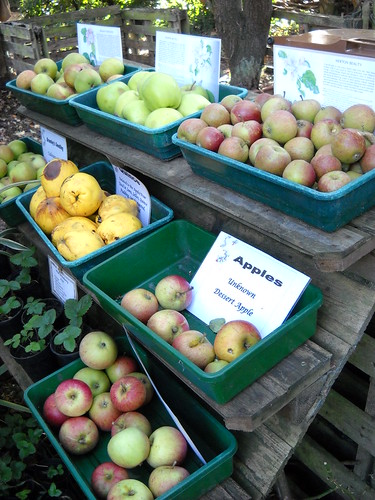 |
| Apples picked from the orchard are offered for sale to visitors |
One part of the garden that intrigued me was this clearing as you walk to the tea shop (part of the old stables).
Mr. Morris was into Medievalism in a big way, and from my reading I learned that to Medieval man, when all around was chaos and danger (hence the castle walls and enclosed gardens), a forest clearing was seen as a refuge in the dark and creepy wilderness, much as an oasis was for the desert nomad. The opening in the leafy canopy gave a view to the sky and an invisible line linking heaven and earth. It made me wonder, then, if this had been old Will's intention when he built the garden? The clearing wasn't on the 1862 plan, and as far as I could gather, is now in the place were the small enclosure is to the north of the house near the stable building used to be. Things that make me go, "Hmmmmmmm..."
Another thing that made me go, "Hmmm" was this addition to the back of the kitchen yard, clearly not in keeping with the style of the house. Remember that this area was once rural, before all the houses crept in, and the Red House was used in WW2 for refugees from the Blitz. The additions here are air raid shelters. Fat lot of good they'd do under a direct hit, seeing as Bexleyheath is square inside Bomb Alley, but here they are. There was talk of tearing them down and restoring this part of the garden but given that such structures are rarely seen and are in themselves historical artifacts, the National Trust has decided to keep them, a decision of which I approve. They don't detract from the garden, I feel, and lend an air of mystery and history to the fabric of the house. In fact, they provide yet another surface to decorate:
The Red House was acquired by the National Trust in 1999 and we all agreed that the garden didn't "feel" like a NT garden, for whatever that's worth. This one retained its character and charm and one could easily understand why Morris fancied calling it the 'Pilgrim's Rest' when he learned that an old Roman road passed nearby.
Next week in class we'll be studying the Arts and Crafts garden in more detail, so my visit to Great Dixter's Christmas fair next weekend is perfectly timed. Have I mentioned I love my work!?
Labels:
Arts and Crafts,
The Red House,
William Morris
13 November 2011
What a Garden Historian Does
When someone asks what I'm studying and I tell them, the usual response is for them to repeat the subject in a tone of some surprise sprinkled with doubt. Sometimes they emphasize the word 'garden' as in "Garden history?" indicating a grasp of the word 'history' and a decided uncertainty as to whether or not gardens have any. They do, indeed, I say, which is then followed by the inevitable question, "What does a garden historian do?"
Just one tiny part of what we do is study how and why a garden changed from this...
to this....
to this....
to this....
to this...
At least it's one tiny piece of what I'll be doing next year as part of my coursework. Exciting, hey!? Right now I have to get back to writing that word and image study on the English Landscape Movement...after all, given that history begins with the last moment, a garden historian's work is never at an end*.
*I held John Evelyn's Kalendarium Hortense, or Gardiner's Almanack, printed in 1664 from which this quote is taken, in my own hands last week. My friend Scott Daigre said it best: Kid. Candystore.
Just one tiny part of what we do is study how and why a garden changed from this...
 |
| Her Majesty's Royal Palace at Kensington, from 'Survey of London' engraved by Johannes Kip (c.1652-1722), 1730 (watercolor tinting is modern) |
 |
| Charles Bridgeman's plan, circa 1733 |
 |
| Plan of Kensington Gardens and Kensington Town drawn by John Rocque, 1756 |
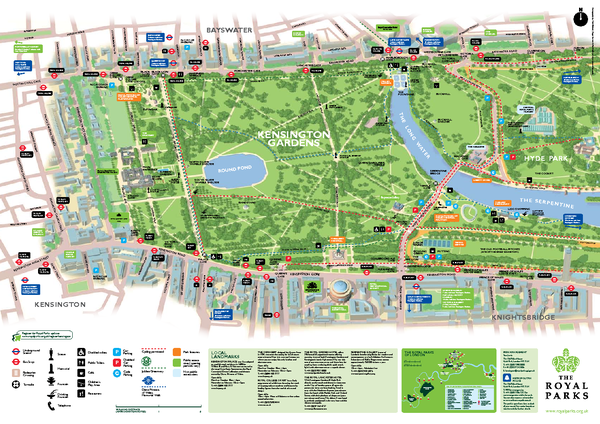 |
| Current map of the gardens and park |
 |
| Design by Todd Longstaffe-Gowan, 2011 |
At least it's one tiny piece of what I'll be doing next year as part of my coursework. Exciting, hey!? Right now I have to get back to writing that word and image study on the English Landscape Movement...after all, given that history begins with the last moment, a garden historian's work is never at an end*.
*I held John Evelyn's Kalendarium Hortense, or Gardiner's Almanack, printed in 1664 from which this quote is taken, in my own hands last week. My friend Scott Daigre said it best: Kid. Candystore.
10 November 2011
If It Ain't Baroque....
I know, that one's as old as dirt, which is probably why the style of garden design during the Baroque era is more commonly referred to as French Formal Style (particularly by those in France!). It is, in fact, a style of garden design that originated in France and came to a glorious apogee during the reign of the Sun King, Louis the Fourteenth (or XIV for those of you who prefer Roman numerals). One thing's for sure, the man's taste in fashion was outrageous !
Actually, the madness all started back in 1661 in a little chateau on the outskirts of Paris owned by an unfortunate man named Nicolas Fouquet. I say unfortunate because he was essentially a tax collector and we all know how popular they are, and also because he made one huge, foolish mistake (though his intentions were good).
Nicolas used his wealth to build a rather lavish home, and he hired the Three Musketeers of the design world to do it. Architect LeVau, painter LeBrun, and gardener LeNotre all conspired together to build what was then the most magnificent, most opulent, most exuberant, ostentatious, sumptuous, posh, recherché, très scandaleux, etcetera estate that a French noble ever clapped eyes on. It took almost 20 years from start to finish and by the time it was done, Fouquet was rightfully pleased and did what any house-proud member of the King's court would do: he threw a house-warming party! (oops!)
Back then it wasn't uncommon for a member of the nobility to dedicate a special room or wing of the house to the monarchy in the hopes that the royal chambers would be graced by the sovereign's presence. Fouquet was no different, and part of his little chateau at Vaux-le-Vicomte was indeed intended for the King.
Well! You can imagine old Louis' response. After all, he was the King - Le Roi Soleil! - the center of the French universe around whom all else orbited, and all he had to show for his polestar position was a swampy old hunting lodge that his dad left him. So he did what any outraged, absolutist Sun King with stellar footwear would do: he had poor Fouquet arrested on trumped up charges and thrown in jail for the rest of his life, then took the design team and most of the interior and exterior decorations and ordered them to do it up one better at Versailles.
And thus the Baroque/French Formal Style/Louis XIV style of garden design was born. But Louis didn't stop there. He had a message to put across (as if parading all that wealth and grandeur around in the form of an amazing palace and seemingly infinite garden weren't enough). This is where I could bore you with all the elements of the Baroque style and discourse endlessly about axial symmetry, parterres de broderie, bosquets, fountains, canals, theatres, topiary, clipped hedges, and plants forced into corsets, all going to show the extent of Louis's power and control over nature, but, with your indulgence, I'd much rather talk about the frogs.
They're much more than a French delicacy (though I wasn't brave enough to try them when I was in country). I mentioned the water-spouting amphibians in my last post and alluded to the fact that they weren't just decorative. A kind reader with an enquiring mind asked what they were all about. I will tell you, mon ami!
One of the things that was en vogue in garden design of this time was the use of classical motifs in the form of statuary and ornament, a trend surviving from Italian Renaissance gardens. Louis had them all over his garden, from the Apollo fountain (Apollo was the Roman sun god) to the Latona Fountain, which represents an episode from Ovid's Metamorphosis. In that tale, Latona, the mother of Apollo and Diana, suffered indignities from the peasants at Lycia. She was so outraged that she turned them all into frogs. King Louis' mom, likewise, suffered the disrespect of the people and the fountain was his response. Basically, it's saying "Don't mess with this Apollo or bad things will happen to you". Fouquet's arrest and disgrace would have been clear in every one's memory, and Louis wasn't one to shy away from exercising his divine right as King and Absolute Monarch when it came to (mis)interpretations of the law. He was the law, and if you crossed him, you were in for it.
Thanks to the Renaissance's revival of classic literature and mythology, people would have understood this allusion pretty clearly. Sadly, I think, much of that understanding has been lost. But now you, mon cher, know the fountain's secrets and can go out into the world and dazzle them with your je ne sais quoi!
And that, mon loutre, is the significance behind the frogs. Which made me wonder, when I saw the same motif on the fountain in the Italian Water Garden at Longwood, who Mr. DuPont had a beef with, or was he just enjoying the joke?
That, mon petit chou, is for you to ponder. And with that, I bid you adieu!
 |
| Louis XIV, the Sun King |
Nicolas used his wealth to build a rather lavish home, and he hired the Three Musketeers of the design world to do it. Architect LeVau, painter LeBrun, and gardener LeNotre all conspired together to build what was then the most magnificent, most opulent, most exuberant, ostentatious, sumptuous, posh, recherché, très scandaleux, etcetera estate that a French noble ever clapped eyes on. It took almost 20 years from start to finish and by the time it was done, Fouquet was rightfully pleased and did what any house-proud member of the King's court would do: he threw a house-warming party! (oops!)
 |
| Vaux-le-Vicomte |
Well! You can imagine old Louis' response. After all, he was the King - Le Roi Soleil! - the center of the French universe around whom all else orbited, and all he had to show for his polestar position was a swampy old hunting lodge that his dad left him. So he did what any outraged, absolutist Sun King with stellar footwear would do: he had poor Fouquet arrested on trumped up charges and thrown in jail for the rest of his life, then took the design team and most of the interior and exterior decorations and ordered them to do it up one better at Versailles.
 |
| Versailles circa 1701 |
 |
| Closeup of the Latona Fountain, frogs and all |
One of the things that was en vogue in garden design of this time was the use of classical motifs in the form of statuary and ornament, a trend surviving from Italian Renaissance gardens. Louis had them all over his garden, from the Apollo fountain (Apollo was the Roman sun god) to the Latona Fountain, which represents an episode from Ovid's Metamorphosis. In that tale, Latona, the mother of Apollo and Diana, suffered indignities from the peasants at Lycia. She was so outraged that she turned them all into frogs. King Louis' mom, likewise, suffered the disrespect of the people and the fountain was his response. Basically, it's saying "Don't mess with this Apollo or bad things will happen to you". Fouquet's arrest and disgrace would have been clear in every one's memory, and Louis wasn't one to shy away from exercising his divine right as King and Absolute Monarch when it came to (mis)interpretations of the law. He was the law, and if you crossed him, you were in for it.
Thanks to the Renaissance's revival of classic literature and mythology, people would have understood this allusion pretty clearly. Sadly, I think, much of that understanding has been lost. But now you, mon cher, know the fountain's secrets and can go out into the world and dazzle them with your je ne sais quoi!
And that, mon loutre, is the significance behind the frogs. Which made me wonder, when I saw the same motif on the fountain in the Italian Water Garden at Longwood, who Mr. DuPont had a beef with, or was he just enjoying the joke?
That, mon petit chou, is for you to ponder. And with that, I bid you adieu!
 |
| Ribbit! |
31 October 2011
Hortus Conclusus
In the last month I have been thrown in the path of great literature covering architecture, landscape, art, history, and gardens (or it's been thrown in mine, however you want to look at it). Just last week, while innocently studying the gardens of the Roman Empire, I met a guy named Vitruvius. Back in the 1st century BC he had some pretty cool things to say about the education of an architect, which you can read by clicking here. I daresay that what he said then applies to today's landscape architect or designer, indeed to historians and teachers of said disciplines, as well. He sayeth thusly (and I condense thusly):
1. The architect (landscape architect, garden designer, historian, etc.) should be equipped with knowledge of many branches of study and varied kinds of learning, for it is by his judgement that all work done by the other arts is put to test.
2. Neither natural ability without instruction nor instruction without natural ability can make the perfect artist. Let him (or her, ahem) be educated, skillful with the pencil, instructed in geometry, know much history (emphasis mine), have followed the philosophers with attention, understand music, have some knowledge of medicine, know the opinions of the jurists, and be acquainted with astronomy and the theory of the heavens.
This struck a chord with me because the more I study Garden History, the more obvious it becomes that I need to be a student of all history: art, architecture, social, cultural, military - you name it - for all of these things inform garden design in any given era.
This is also why, some years ago, I sat beside myself in a class on garden history while the instructor used this image in his lecture on Medieval gardens, then proceeded to get it all wrong.
Let me 'splain.
What we have here is a painting completed in the first decades of the 15th century depicting certain illustrious and heavenly personages pleasantly employed in a walled garden, or hortus conclusus, typical of the type found in castle gardens during the Middle Ages. It's not a big painting, barely larger than a standard letter-size sheet of paper. That right there should tell us something, i.e. that it wasn't intended for ostentatious display, and probably hung in someone's living room over the mantelpiece or other prominent place where the owner could gaze on it in meditative contemplation.
Don't judge a canvas by its size, because this one is bursting with symbolism and stories. If you were a person in the Middle Ages you would instantly grasp their meaning, even if you were illiterate (which most people then were). To fully understand the symbolism behind the painting and what it represents, we have to understand something of the time in which it was produced and the audience who might have been gazing on it, for this painting wasn't intended to be simply looked at, it was meant to be read.
So, for the When: the worst was (almost) over and by 1410 the sun was setting on the Dark Ages, the world poised and waiting for the dawn of a new age. The church was the unifying cultural and educational influence, with monks and priests being the scholars of the dwindling population, which was being wiped out to the tune of one-in-three by the Black Death. People were spiritually bereft, and it was the Church's job to spread the gospel message of Christianity.
"May He who Illuminated this, Illuminate me"
Which leads us to How: as I mentioned, the average person in 1400 couldn't read. This is where all those amazing illuminated manuscripts come in. (But you just said people couldn't read? Ah! It makes me wonder...can it be argued that the Medieval Church invented the graphic novel?)
The printing press won't be invented for another 20 or so years and even then it would be at least another decade before Johannes printed only 180 copies of his Bible, so even though everyone went to church none carried Bibles the way we do today (to say nothing of having a smart phone app to fall back on). To put it simply, the message was delivered by the priest in the pulpit and illustrated by the windows and paintings in the church.
And you thought all that stained glass was just for decoration!
Art of the Middle Ages was replete with religious symbolism. The enclosed garden itself was a symbol of the Virgin Mary's purity and holiness, as the wall kept out all the diabolical things that were on the other side. Indeed, a symbol of evil can be seen in our painting in the form of a little black devil sitting obediently at the feet of the Archangel Michael, clearly vexed at not being permitted to wreak havoc on this little paradise. Nearby is a dragon at the feet of its slayer, saintly Sir George, who slew the dragon to free a virginal princess. The devil and the dragon have no power here.
Even the flowers had symbolic meanings associated with them, and were painted with such careful detail that botanists and horticultural enthusiasts have been able to identify them. The Language of Flowers was alive and well in the Middle Ages so it would have come as no surprise to you, you poor illiterate Medieval peasant farmer, that the little devil is sitting on a patch of periwinkle which, as everyone knows, is capable of warding off evil spirits.
So even though you couldn't read you could understand pictures and, thanks to the diligence of the church, you would have been well-versed in the stories of the Bible and would have known who Mary, Jesus, the Heavenly Host, and the Saints all were. Not only that, you would have been able to identify them by sight and would have known the stories and legends surrounding them.
So how does all this information affect garden design today? In oh, so many ways, and it sure affects how much we can decipher of garden design of the past. Most people now would look at this painting and think it shows a pretty Medieval garden with Mary reading a book while Baby Jesus plucks on a harp with the nanny, and they would be totally missing the point (perhaps this where the aforementioned garden history instructor erred in his ways which makes me want to ask the same question that Indiana Jones did: "Didn't you ever go to Sunday School!?").
On into modern times, gardens have been designed with art and architecture that convey symbolic messages to visitors either for their entertainment or as a device to communicate the owner's wealth, prestige, or political standing (the frogs around the Latona fountain at Versailles - not just ornamental amphibians spouting water, no sireebub!). If we, as garden makers, do not endeavor to become "equipped with knowledge of many branches of study and varied kinds of learning", we will lose the ability to create, much less conserve or restore, gardens with cultural and historic significance. Even worse, we will be ill-equipped to teach those coming after us and in a few generations we'll be no better off than the ignorant provincials of the Middle Ages. At least they knew how to read pictures.
Right. That's it for tonight. Now I'm off to France, and the Baroque court of King Louis XIV (that man did have amazing taste in footwear, didn't he!?). Wonder what kinds of surprises we'll find there....
1. The architect (landscape architect, garden designer, historian, etc.) should be equipped with knowledge of many branches of study and varied kinds of learning, for it is by his judgement that all work done by the other arts is put to test.
2. Neither natural ability without instruction nor instruction without natural ability can make the perfect artist. Let him (or her, ahem) be educated, skillful with the pencil, instructed in geometry, know much history (emphasis mine), have followed the philosophers with attention, understand music, have some knowledge of medicine, know the opinions of the jurists, and be acquainted with astronomy and the theory of the heavens.
This struck a chord with me because the more I study Garden History, the more obvious it becomes that I need to be a student of all history: art, architecture, social, cultural, military - you name it - for all of these things inform garden design in any given era.
This is also why, some years ago, I sat beside myself in a class on garden history while the instructor used this image in his lecture on Medieval gardens, then proceeded to get it all wrong.
 |
| Paradiesgärtlein (Little Garden of Paradise), by Upper Rhenish Master c. 1410 |
What we have here is a painting completed in the first decades of the 15th century depicting certain illustrious and heavenly personages pleasantly employed in a walled garden, or hortus conclusus, typical of the type found in castle gardens during the Middle Ages. It's not a big painting, barely larger than a standard letter-size sheet of paper. That right there should tell us something, i.e. that it wasn't intended for ostentatious display, and probably hung in someone's living room over the mantelpiece or other prominent place where the owner could gaze on it in meditative contemplation.
Don't judge a canvas by its size, because this one is bursting with symbolism and stories. If you were a person in the Middle Ages you would instantly grasp their meaning, even if you were illiterate (which most people then were). To fully understand the symbolism behind the painting and what it represents, we have to understand something of the time in which it was produced and the audience who might have been gazing on it, for this painting wasn't intended to be simply looked at, it was meant to be read.
So, for the When: the worst was (almost) over and by 1410 the sun was setting on the Dark Ages, the world poised and waiting for the dawn of a new age. The church was the unifying cultural and educational influence, with monks and priests being the scholars of the dwindling population, which was being wiped out to the tune of one-in-three by the Black Death. People were spiritually bereft, and it was the Church's job to spread the gospel message of Christianity.
"May He who Illuminated this, Illuminate me"
Which leads us to How: as I mentioned, the average person in 1400 couldn't read. This is where all those amazing illuminated manuscripts come in. (But you just said people couldn't read? Ah! It makes me wonder...can it be argued that the Medieval Church invented the graphic novel?)
The printing press won't be invented for another 20 or so years and even then it would be at least another decade before Johannes printed only 180 copies of his Bible, so even though everyone went to church none carried Bibles the way we do today (to say nothing of having a smart phone app to fall back on). To put it simply, the message was delivered by the priest in the pulpit and illustrated by the windows and paintings in the church.
And you thought all that stained glass was just for decoration!
 |
Detail from Little Garden of Paradise |
Art of the Middle Ages was replete with religious symbolism. The enclosed garden itself was a symbol of the Virgin Mary's purity and holiness, as the wall kept out all the diabolical things that were on the other side. Indeed, a symbol of evil can be seen in our painting in the form of a little black devil sitting obediently at the feet of the Archangel Michael, clearly vexed at not being permitted to wreak havoc on this little paradise. Nearby is a dragon at the feet of its slayer, saintly Sir George, who slew the dragon to free a virginal princess. The devil and the dragon have no power here.
Even the flowers had symbolic meanings associated with them, and were painted with such careful detail that botanists and horticultural enthusiasts have been able to identify them. The Language of Flowers was alive and well in the Middle Ages so it would have come as no surprise to you, you poor illiterate Medieval peasant farmer, that the little devil is sitting on a patch of periwinkle which, as everyone knows, is capable of warding off evil spirits.
So even though you couldn't read you could understand pictures and, thanks to the diligence of the church, you would have been well-versed in the stories of the Bible and would have known who Mary, Jesus, the Heavenly Host, and the Saints all were. Not only that, you would have been able to identify them by sight and would have known the stories and legends surrounding them.
So how does all this information affect garden design today? In oh, so many ways, and it sure affects how much we can decipher of garden design of the past. Most people now would look at this painting and think it shows a pretty Medieval garden with Mary reading a book while Baby Jesus plucks on a harp with the nanny, and they would be totally missing the point (perhaps this where the aforementioned garden history instructor erred in his ways which makes me want to ask the same question that Indiana Jones did: "Didn't you ever go to Sunday School!?").
On into modern times, gardens have been designed with art and architecture that convey symbolic messages to visitors either for their entertainment or as a device to communicate the owner's wealth, prestige, or political standing (the frogs around the Latona fountain at Versailles - not just ornamental amphibians spouting water, no sireebub!). If we, as garden makers, do not endeavor to become "equipped with knowledge of many branches of study and varied kinds of learning", we will lose the ability to create, much less conserve or restore, gardens with cultural and historic significance. Even worse, we will be ill-equipped to teach those coming after us and in a few generations we'll be no better off than the ignorant provincials of the Middle Ages. At least they knew how to read pictures.
Right. That's it for tonight. Now I'm off to France, and the Baroque court of King Louis XIV (that man did have amazing taste in footwear, didn't he!?). Wonder what kinds of surprises we'll find there....
21 October 2011
More Color, Please
I just realized something. I just realized I've been a historical conservationist much longer than I thought. You see, in another life long, long ago, I was a Homeowner. The home I owned was a 1910's Craftsman bungalow with a wrap-around porch, built-in china cabinet, picture rails in every room, and an inglenook. It had been "upgraded" in the 1950's with pink and blue tile in the bathroom, French doors in the dining room were replaced with sliders, and the kitchen was remodeled, eliminating the roll-away bed that lived below the built-in china cabinet as well as blocking the door to the basement stairs (who's bright idea was that!?). The changes didn't fit, and they made me twitch, so I immediately decided to restore the house to its original character. I also had grand plans for the garden, but the road of life has its unexpected turns and now my house belongs to someone else. I hope they appreciate it as much as I did.
Our visit began with a wander around the garden, which I'll write about next time, then we were treated to a tour by a knowledgeable guide who had been friends of the last owners of the house. He knew his Morris history, and really helped paint a mental picture of what the house would have looked like when the Morris family lived there and had streams of artist friends visiting and creating. I wanted to ask why he didn't stop his friends from their destructive acts and throw the white paint out? Everyone knows, friends don't let friends use 'eggshell'.
The Red House was built in 1859-60 by Morris's Oxford friend Philip Webb. It takes its name from the brick exterior, not yet in fashion for domestic buildings of the 19th century. Inside, Morris and Friends set about creating wall paintings, window treatments in the form of stained and painted glass, and handmade furniture to fill the house. None of the wallpaper for which Morris is known would have been hung in the house because he had not yet started his textile company, but he began designing the patterns while living here.
Morris found inspiration in his studies of medievalism and I'm currently deep into writing a word and image study on a Medieval garden. To fully understand the message of the image I'm studying required me to look up the various saints and their associated legends, so I was quite proud of myself when I recognized Saint Catherine holding her wheel in this stained glass window!
In an upstairs bedroom hidden behind a closet is a faded wall painting began by Elizabeth Siddal, the wife of Dante Gabriel Rossetti. Depicting a woman in sad repose, it's a far cry from the gaily painted nymph on the closet door of the child's room at Charleston House, but you get the sense that the entire wall painting would have told a story, not to mention livening up the room, and I was curious to know what that story was or would have been (Elizabeth died before the painting was finished).
Viewing the interior of the house brought to mind the same questions we face when considering the conservation of an historic garden. While the Red House is famous because of William Morris, there were other owners and occupants during the house's history, and the law of the land gave them the right to make whatever changes they wanted (grumble, grumble). So the dilemma faced by every conservationist is whether to maintain, repair, restore, or conserve. And when you're talking about historical layers, which one do you choose?
In my own house I chose to keep the faded pink and blue bathroom tile because it was in good condition, felt retro, and was cost-prohibitive to replace. One might argue the upgrade is a good representative of the type of "updates" that were commonly made to old houses in the 1950's, and should be maintained as a sample of '50s decor. A purist would restore back to the original. In the case of the Red House, I lean toward purity and originality. The Red House is billed as the home that was designed and built for William Morris, founder of the Arts and Crafts Movement, yet the interior does not represent his design philosophy. I would guess that most people familiar with his designs expect to see them covering the walls of his home, not the stark whiteness that glares at you when you enter. In that respect, I would argue in favor of restoring the interior by removing the white paint. Perhaps it's too costly? Perhaps since the National Trust only recently acquired the house, it's on their to-do list?
Indeed, the only part of the place where I could approve of changes made by previous owners was in the garden, which was enlarged from Morris's day yet retains a continuity and character that is fitting with the style of the house. And there's a cat! I heartily approve of cats in the garden!
On a side note, and as a demonstration of just how much life color adds to a place, here's a photo of some rather unexpected gifts bestowed upon me by my classmates for taking on a beast of an editing job for a group project. I wasn't expecting anything in return, but the flowers are doing a wonderful job of cheering my dismal little student cell, greeting me with their smiles and flirty petals when I return from a long slog in the library. Possibly my favorite thing about it is the fact that I don't have a vase and had to put the flowers in my cafetiere - look how great the colors work together! The small painting is an oil pastel of a garden conservatory by my god-brother.
It just goes to prove what Morris said:
All rooms ought to look as if they were lived in, and to have so to say, a friendly welcome ready for the incomer. ~William Morris
When I bought the house the walls had been painted white and the whole place was rather cold and lifeless. In my giddy, uneducated, new homeowner state, I bounced down to the paint store where I was introduced to a whole new world in the form of the Arts and Crafts color palette. There were actually paint chips in colors common to the Craftsman home of the 1910's and '20s, with names inspired by nature like 'Acorn Yellow', 'Bark', 'California Redwood', 'Sage'. I was like a kid in a candy store!
I started looking through design magazines focused on Craftsman homes for ideas and decided on a few different colors: a sagey green for the living room, a warm glowing chamois for the dining room, two shades of lavender for the bedroom, and a spicy paprika-like color for the office that changed from chocolate-raspberry in dark corners to a rusty red in the light. Armed with a can of olive green paint and a brush, I started in the inglenook. That was the day the house came alive.
 |
| Traditional Craftsman colors |
On either side of the fireplace were twin stained glass windows. The windows had been painted shut and the colors of the flower motif in the glass were drab. But the second I added the olive paint to the walls, they dazzled! It was as if the house was opening it's eyes after a long slumber. When the painting was finished the rooms no longer felt cold, they felt warm and homey. I have loathed the glaring starkness of bare white walls ever since.
Little did I know that the Arts & Crafts Movement began over 150 years ago in a little suburb of London called Bexleyheath. William Morris built a house here, and it is he who started the decorating and textile craze that became Arts & Crafts, almost by accident. His philosophy spilled into the garden, too, and examples of the Arts & Crafts Garden style can be seen in English gardens at Great Dixter, Sissinghurst, Hidcote, and the homes of fellow bungalow owners in California.
Imagine my curiosity when I learned I would be visiting Morris's Red House with my Historic Garden Conservation class, and envisioning the colorful interior. Imagine my dismay when I stepped inside and saw bare white walls!
They weren't always that way, I learned. The National Trust only recently acquired The Red House in 2003 and it was a previous owner who white-washed the original warmth of the walls away. The heathens!
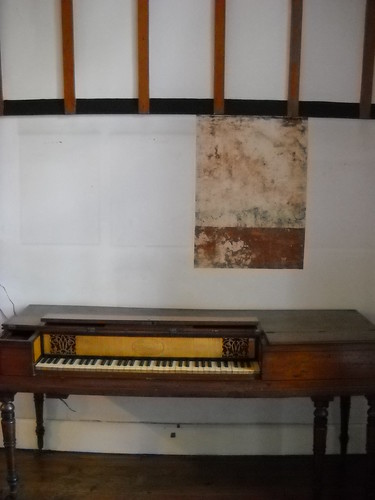 |
| The pianoforte in the upstairs living room, with a section of the original wall color revealed. |
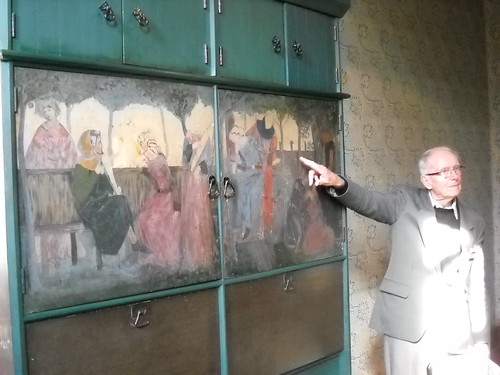 |
| Our tour guide, pointing out the portraits of family and friends painted by Morris on this settle in the front hall |
 |
| Painted glass window in the side hall done by Morris's friend, artist Edward Burne-Jones |
 |
| "Fate and Love" |
Another sin committed by the previous owners was to cover up William Morris's wall decor in the upstairs living room with white paneling. I noticed the paint chipped edges of a section of paneling and wondered what that was about when the tour guide explained and opened the panels to reveal a colorful flower motif behind. Had they no shame!?
In an upstairs bedroom hidden behind a closet is a faded wall painting began by Elizabeth Siddal, the wife of Dante Gabriel Rossetti. Depicting a woman in sad repose, it's a far cry from the gaily painted nymph on the closet door of the child's room at Charleston House, but you get the sense that the entire wall painting would have told a story, not to mention livening up the room, and I was curious to know what that story was or would have been (Elizabeth died before the painting was finished).
Viewing the interior of the house brought to mind the same questions we face when considering the conservation of an historic garden. While the Red House is famous because of William Morris, there were other owners and occupants during the house's history, and the law of the land gave them the right to make whatever changes they wanted (grumble, grumble). So the dilemma faced by every conservationist is whether to maintain, repair, restore, or conserve. And when you're talking about historical layers, which one do you choose?
In my own house I chose to keep the faded pink and blue bathroom tile because it was in good condition, felt retro, and was cost-prohibitive to replace. One might argue the upgrade is a good representative of the type of "updates" that were commonly made to old houses in the 1950's, and should be maintained as a sample of '50s decor. A purist would restore back to the original. In the case of the Red House, I lean toward purity and originality. The Red House is billed as the home that was designed and built for William Morris, founder of the Arts and Crafts Movement, yet the interior does not represent his design philosophy. I would guess that most people familiar with his designs expect to see them covering the walls of his home, not the stark whiteness that glares at you when you enter. In that respect, I would argue in favor of restoring the interior by removing the white paint. Perhaps it's too costly? Perhaps since the National Trust only recently acquired the house, it's on their to-do list?
Indeed, the only part of the place where I could approve of changes made by previous owners was in the garden, which was enlarged from Morris's day yet retains a continuity and character that is fitting with the style of the house. And there's a cat! I heartily approve of cats in the garden!
On a side note, and as a demonstration of just how much life color adds to a place, here's a photo of some rather unexpected gifts bestowed upon me by my classmates for taking on a beast of an editing job for a group project. I wasn't expecting anything in return, but the flowers are doing a wonderful job of cheering my dismal little student cell, greeting me with their smiles and flirty petals when I return from a long slog in the library. Possibly my favorite thing about it is the fact that I don't have a vase and had to put the flowers in my cafetiere - look how great the colors work together! The small painting is an oil pastel of a garden conservatory by my god-brother.
It just goes to prove what Morris said:
All rooms ought to look as if they were lived in, and to have so to say, a friendly welcome ready for the incomer. ~William Morris
Labels:
Arts and Crafts,
color,
garden cat,
The Red House,
William Morris
08 October 2011
A Stroll Around Knole
What has 365 rooms, 52 staircases, 12 entrances, and 7 courtyards? Answer: A Calendar House. A handful of notable examples can be found in Britain and I get to study one of them (I love my job! And whoever says being a postgraduate student isn't a job was obviously never a postgraduate student!).
But I digress. We were talking about the garden, weren't we? It was originally laid out 300 years ago as series of geometric squares and rectangles planted as orchard and managed to escape the ravages of fashion during the English Landscape Movement. Considerable change can be seen in this image, drawn by Thomas Badeslade in the 1719.
Today most of the orchard has been replaced with a wilderness of beech, oak, Liriodendron, one truly amazing Cedrus, and a number of rhododendrons. Mossy paths curve out of sight, inviting you to enter and wander. As someone in my class group said, it's a good place to run around naked! A rose garden has been replaced with veg contained within a knotted boxwood hedge and a sunken pond has been turned into a swimming pool.
Behind the enclosed herb garden is a tennis court, itself enclosed by a decidedly un-ornamental and decidedly not 17th century black chain-link fence. The herb garden was probably one of my favorite spots but it suffers from a lack of seating. It's a tease, this garden, because once inside you want to linger but aside from displacing the little cherubim from his seat on the dolphin, there is no place to sit and enjoy the herb's perfume.
The garden and park at Knole are this term's case study for the Historic Garden Conservation course I'm taking. We have been invited by the present Lord Sackville to study Knole and develop a conservation management plan so you will hear more about the challenges of conserving and restoring an historical family home right here. So far my favorite part of research is the literary aspect, and for homework I have to read Vita's novel The Edwardians, which she based on life at Knole.
Did I mention I love my job!?
But I digress. We were talking about the garden, weren't we? It was originally laid out 300 years ago as series of geometric squares and rectangles planted as orchard and managed to escape the ravages of fashion during the English Landscape Movement. Considerable change can be seen in this image, drawn by Thomas Badeslade in the 1719.
 |
| 1st-art-gallery.com |
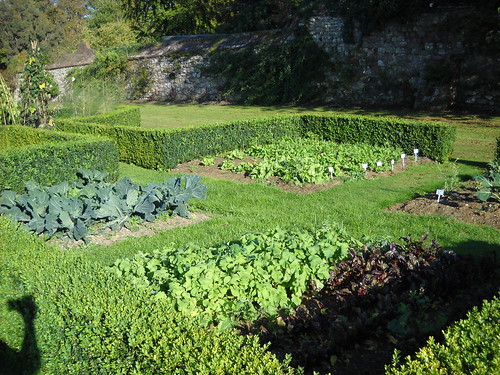 |
| veggie garden |
 |
| Walled herb garden |
Did I mention I love my job!?
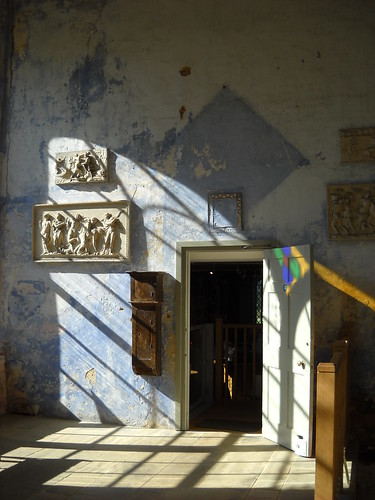 |
| The newly opened Orangery |
Labels:
English Counry House,
Knole,
Sackville-West
27 September 2011
Where Time Begins
Mercy me! Where does the time go? I've been negligent in my blogging duties and haven't even posted half the things I thought of while I was at Great Dixter. Perhaps a retrospective will make its way to these hallowed screens sometime. Soon? Maybe.
And so we fast forward to the present. I am back in England studying for my MA in Garden History and what better place to be for the subject? Of all the countries in the world, England has to be the most garden-centric. With upwards of 800 gardens in England alone, I don't expect to be bored while I'm here! While the first week was filled with induction and I really should have been diving into my studies to get a head start, instead, I decided to do a little exploring of my new surroundings.
Week 1: Greenwich
Living and studying in London? Historically speaking, pretty darn awesome! In the coming weeks I will make it a goal to post interesting snippets about the places I visit and gardens and garden topics I study. Stay tuned for a bit on Egyptian gardens and the ancestral home of Vita Sackville-West's family, Knole.
And so we fast forward to the present. I am back in England studying for my MA in Garden History and what better place to be for the subject? Of all the countries in the world, England has to be the most garden-centric. With upwards of 800 gardens in England alone, I don't expect to be bored while I'm here! While the first week was filled with induction and I really should have been diving into my studies to get a head start, instead, I decided to do a little exploring of my new surroundings.
Week 1: Greenwich
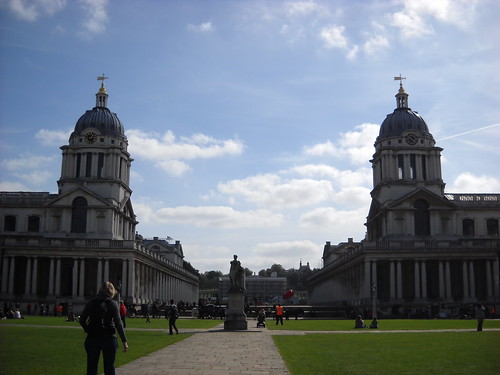 |
| Old Royal Naval College, Greewich Now the site of the University of Greenwich |
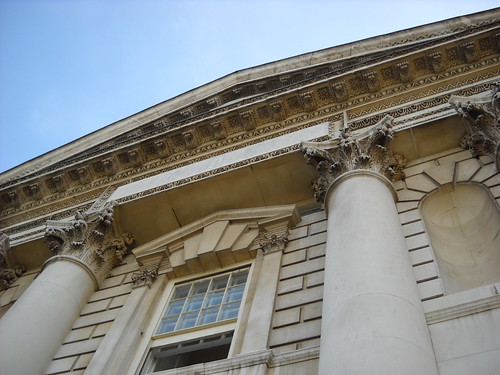 |
| Architecture! |
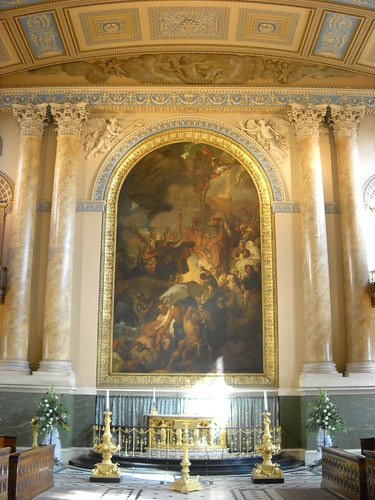 |
| The Chapel |
 |
| The Painted Hall Used as a dining room for special occasions |
 |
| Longest perennial border in the world, or so I'm told. During WW2 the Flower Garden in another part of the park was planted with anti-aircraft guns. After the war the park was restored. |
 |
| Where time begins In the courtyard above, people are queued up waiting their turn to straddle the Prime Meridian. In doing so, half of you is in the Western Hemisphere while the other half is in the Eastern Hemisphere. Good party trick! |
 |
| Greenwich Park, site of a Roman settlement and the oldest enclosed Royal Park |
 |
| Local culture |
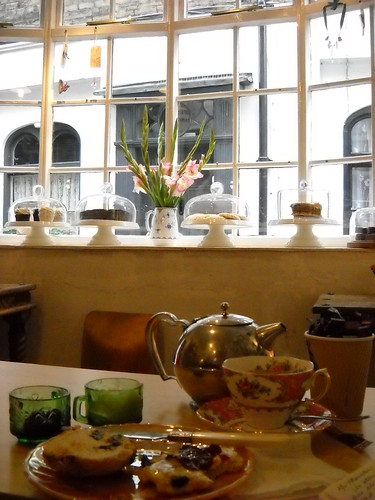 |
| Local flavor! |
Labels:
Garden History,
Greenwich,
Royal Observatory,
tea and goodness
Subscribe to:
Posts (Atom)








